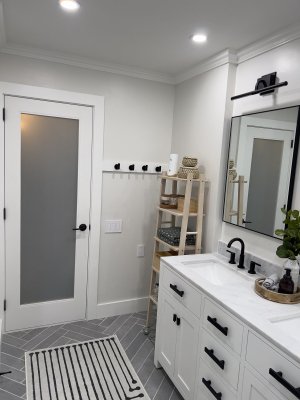Most of you guys in here have been pretty smart and taken out a fixed rate loan. But for anyone on the fence... PLEASE stay away from everything on this list.
http://www.fool.com/investing/gener...-comeback-should.aspx?source=eogyholnk0000001
While applying for a mortgage recently, I was rather surprised at some of the loan options I was offered. Banks are now offering interest-only mortgages, balloon loans, and stated-income loans, and that's just what I found in my brief shopping experience. And while I wound up going with a traditional fixed-rate mortgage, the resurgent availability of these loan products definitely caught my attention. To give you an updated picture of today's mortgage market, here's a rundown of the types of loans that were widespread in the mid-2000s, whether they're available today, and whether we should be concerned about a repeat of the crash.
Which mortgage types are making a comeback?
Here are some of the exotic mortgage loans that were common before the financial crisis, and whether they exist today.
1. Interest-only mortgages: Essentially, these loans require borrowers to pay only the interest for a certain number of years, while the principal stays constant. After the interest-only period is up, the monthly payments will rise and the principal balance will start to be paid down.
These mortgages are definitely making a comeback. Generally, an interest-only mortgage starts with a relatively low interest rate that begins to adjust after a set period. Once the principal repayment starts to kick in, typically in 10 years, the monthly payments drastically increase. In many cases they double or more.
2. Negative amortization loans: These are similar to an interest-only loan, except the payments aren't even enough to cover the interest. So instead of being paid off over time, the principal balance grows as a result of accumulation of unpaid interest. For example, with a negative amortization loan, you could buy a $250,000 house, make your mortgage payments as agreed for several years, and then end up owing $300,000. It's easy to understand how many borrowers got themselves into trouble with this kind of mortgage. Thankfully, these are virtually extinct today.
3. Balloon mortgages: A
balloon mortgage amortizes over a standard 30-year period, and the payments do chip away at the principal balance over time. However, after a set amount of time (seven years is common), the entire remaining balance is due. These loans come with lower interest rates than standard mortgages, but they have tremendous risk related to the borrower's ability to refinance or sell the home.
Balloon mortgages can be found today and are typically used by buyers who plan to stay in their homes for just a few years, to keep the monthly payments as low as possible.
4. "No-doc" and "Low-doc" loans: In the run-up to the financial crisis, there were several types of "limited documentation" loans. Most famously, there were the NINJA loans -- No Income, No Job or Assets -- which required nothing but a credit score. Then there were loans that required only asset verification but no income documentation. And finally, there were "stated income" loans, which still required asset and credit verification but took the borrower's word when it came to income.
There are stated income loans around today, used principally by self-employed borrowers. Every lender I could find requires a 20% down payment, and you can bet the lender will take a closer look at your bank statements and other asset verification.
5. Cash-out refinancing and home-equity loans: These never really went away, but banks' standards are much higher today, both in terms of credit and the percentage of the home's value borrowers can take out. Today, most of these loans and lines of credit require a loan-to-value of no more than 80%
including the new loan, whereas before the crisis it wasn't uncommon to see home-equity loans or cash-out refinancing loans made for 110% of a home's value, or more.
6. Option ARM: These were perhaps the most dangerous type of loan made before the financial crisis. Essentially, the borrower could choose how much to pay each month on the loan for the first two or three years, even if it didn't cover the interest. During 2005 and 2006, approximately 10% of all new mortgages were option ARMs, and many borrowers found themselves owing hundreds of thousands of dollars
more than their homes were worth once the market collapsed and the "teaser" period ended. Fortunately, these are a thing of the past.
7. Subprime loans: This is a broad term that refers to any loan made to borrowers that don't meet traditional, or "prime" credit standards. Subprime borrowers still have options today, like FHA mortgages, but lenders take a closer look at the qualifications than they used to.
Still, subprime loans represent a large percentage of potential homebuyers, so we definitely need responsible subprime lending. As long as subprime loans are made to borrowers who have the ability to pay them back, there's nothing inherently wrong with them, despite the negative image associated with the word "subprime."



 Help me get right bruhs.
Help me get right bruhs. Glad to see our generation being smart about the things that put GenX in a bind.
Glad to see our generation being smart about the things that put GenX in a bind. 



































